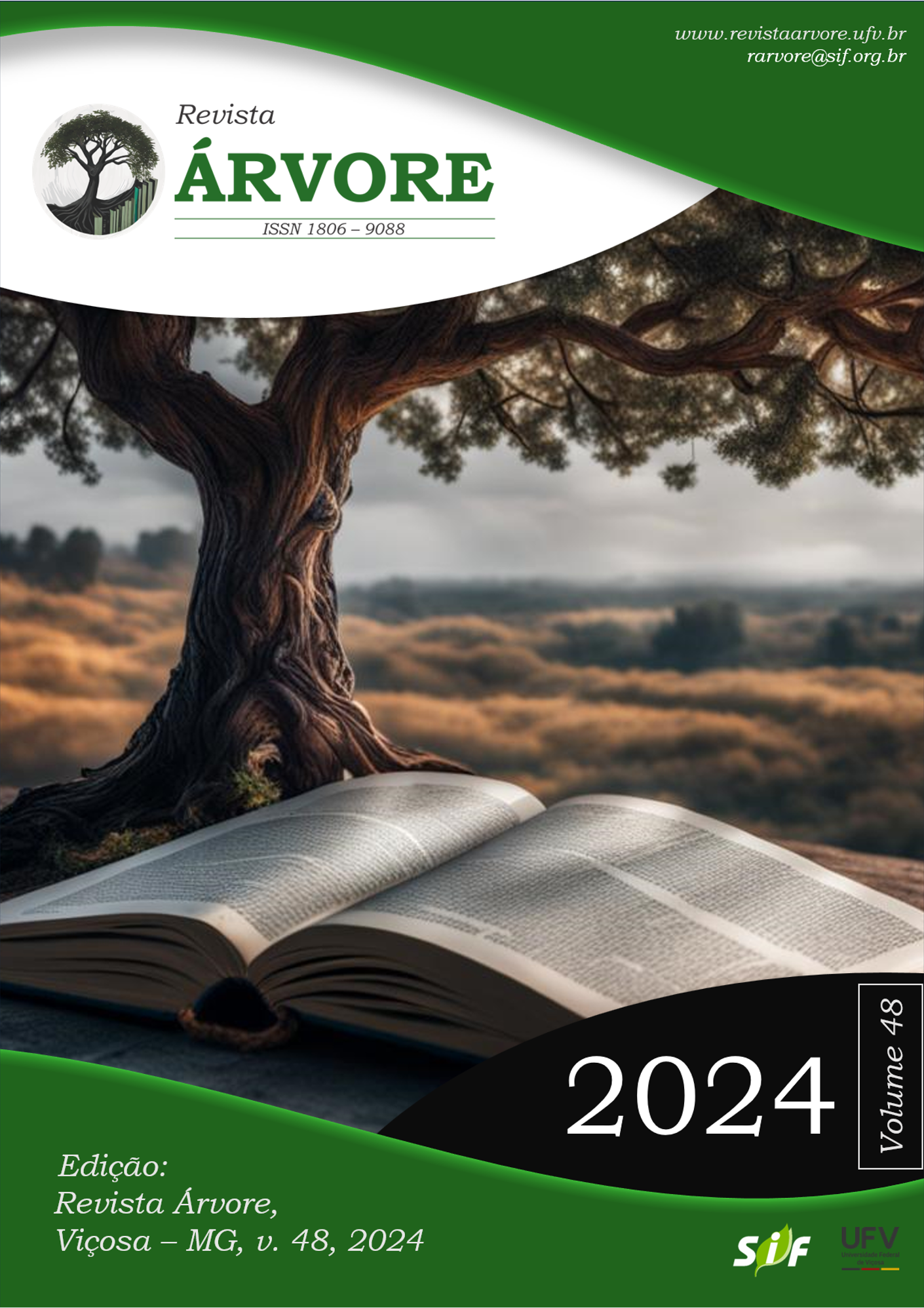Change in a terra firme dense ombrophilous forest after logging in the brazilian Amazon (2006-2016)
DOI:
https://doi.org/10.53661/1806-9088202448263679Keywords:
Mortality, Recruitment, Biomass, Forest managementAbstract
The effective management of disturbed forests requires adequate knowledge of forest dynamics. In this study, we assessed the changes in a managed forest using 18 permanent 1 ha plots located in a ‘terra firme’ tropical rainforest in the Eastern Amazon (Paragominas, Brazil). All individuals with a diameter at breast height (DBH) ≥ 20 cm were evaluated in two separate assessments conducted in 2006 and 2016. The results show that, ten years after logging, the managed forest exhibits an imbalance between recruitment (1.54% per year) and mortality (2.23% per year) rates, indicating that it is still in the process of recovering its structure. Nevertheless, biomass tended to increase after logging (28.49 tons per hectare). The characteristics of these changes suggest that the forest is undergoing a silvigenetic process driven by the effects of logging. Furthermore, our observations indicate that the forest remains active and has sufficient potential for new timber production at the end of the cutting cycle, considering the same species and tree sizes.Keywords: Mortality; Recruitment; Biomass; Forest management.Scientific Article
Downloads
Published
How to Cite
Issue
Section
License
All authors agreed to submit the work to Revista Árvore and granted the exclusive license to publish the article. The authors affirm that it is an original work and has not been previously published elsewhere. The scientific content and opinions expressed in the article are the sole responsibility of the authors and reflect their opinions, not necessarily representing the opinions of the editorial board of Revista Árvore or of the Society of Forest Investigations (SIF).








